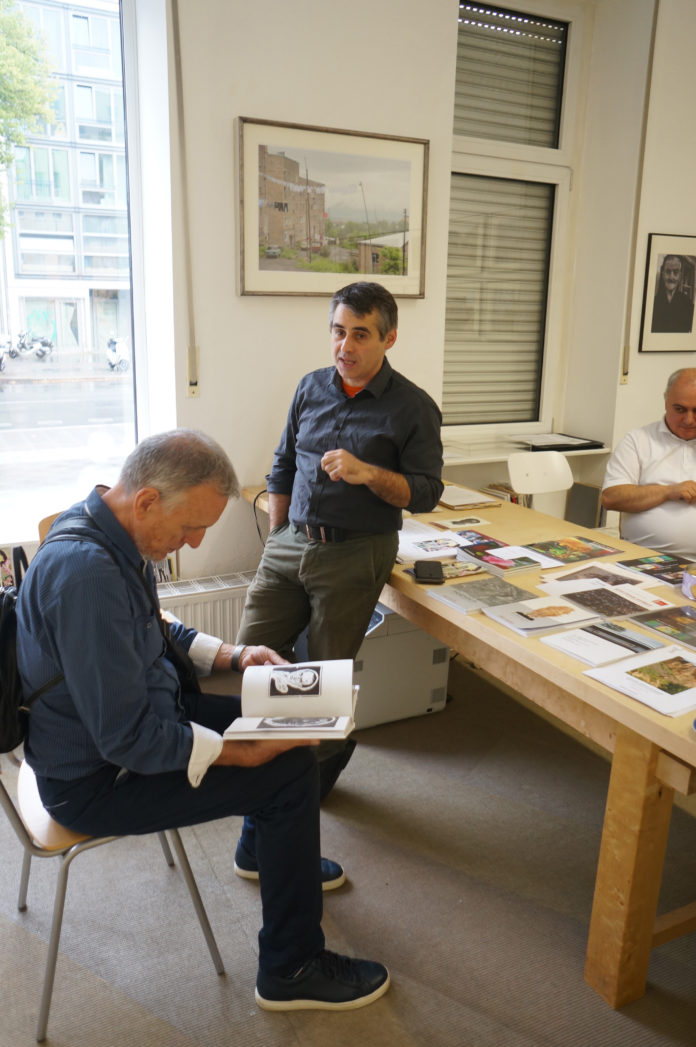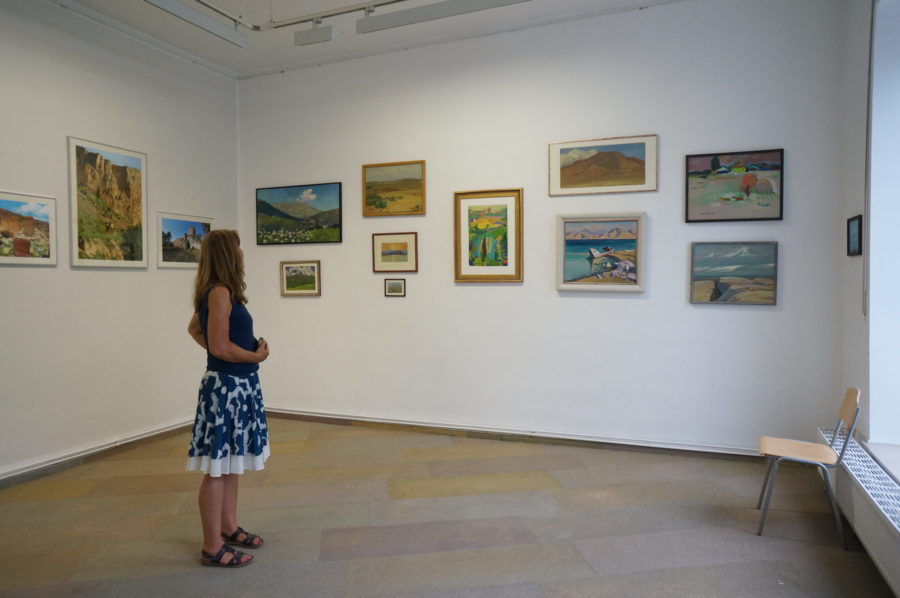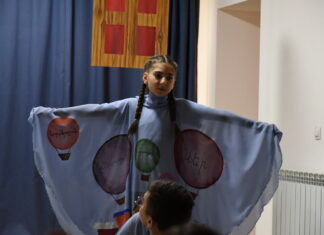BERLIN — When Azerbaijan attacked the Tavush region in July, Armenians everywhere responded with protest demonstrations. In Berlin, as reported in this newspaper, several cultural associations came together to organize an artistic response, with an exhibition that opened on August 9 and ended on August 30. Hosted by the Wolf & Galenz Gallery in Berlin, it was entitled, “Armenia: Grace and Violence. Images of Landscapes and Traces of War.”
Artist and curator Archi Galentz told guests at the vernissage that the exhibition had come as a spontaneous reaction to the renewed outbreak of violence. The initiative is a cooperative effort between his gallery, the Association of the European and Armenian Experts e.V. (AEAE) and the Tavush Spiritual Revival Foundation.
Mikayel Minasyan, chairman of the Board of the AEAE, greeted the visitors, and introduced them to the contrasting themes presented in the works on display. On the one hand, magnificent Armenian landscapes adorned with historic architectural monuments; on the other, ravages of war. Here it is not only the scenes of the recent conflict that are evoked, but also war zones in 2016. In the violent four-day war, Minasyan said, both sides suffered massive casualties. “What we want to do with this exhibition,” he said, “is to show what war destroys and what peace offers.”
On one wall Minasyan pointed to the breathtaking Armenian landscapes, on another, the photographs of monuments of Armenian architectural treasures, churches, monasteries and Khachkars. Both expressions of beauty stand in stark contrast to the devastation and suffering in the war zone, depicted also in images of internalized horror.
Not long after the conflict was rekindled in July, Minasyan recalled, a massive explosion obliterated large parts of Beirut. The Armenian quarter was also hit, leading to 13 deaths, more than 100 wounded and 200 missing.
“After the Corona pandemic,” he noted, “there came one crisis after the other,” he noted.









